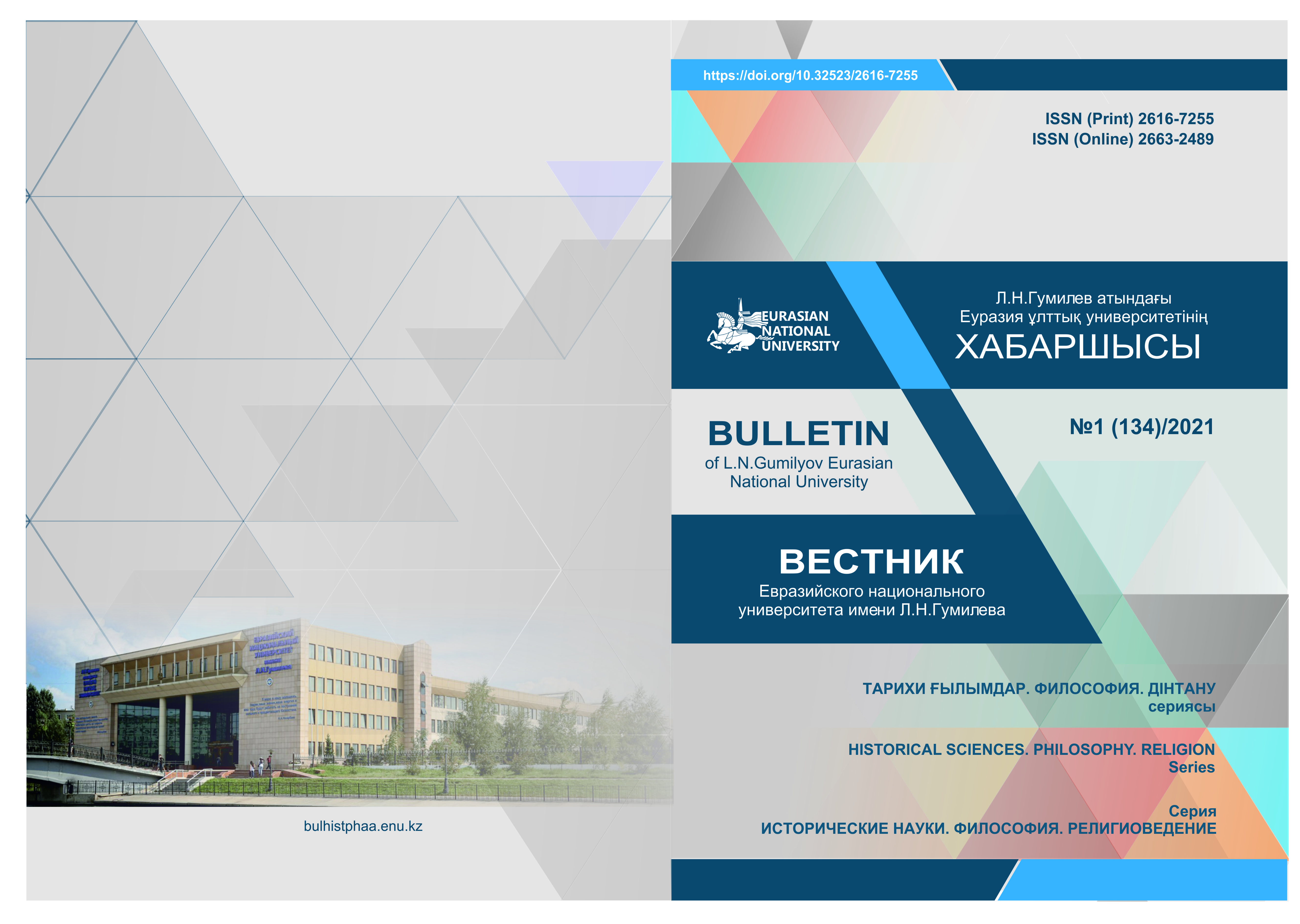City and intelligentsia during the XIX-XX centuries. (historiographic aspect)
Views: 146 / PDF downloads: 119
DOI:
https://doi.org/10.32523/2616-7255-2021-134-1-107-119Keywords:
Kazakh historiography; Russian historiography, national intelligentsia; activities of the national intelligentsia, city; urban environment; urban space, public activity, urban history, history of the everyday.Abstract
The formation and development of the intelligentsia as a political and creative force could not exist without the influence of the urban environment. The integration of Kazakh intellectuals into the urban space has led to qualitative changes in such aspects as city, intelligentsia and its behavioral patterns. The study of the factors of influence of urban space on the development of social groups and institutions, namely on the qualitative characteristics of the national intelligentsia, the processes of their adaptation to the urban environment is an important task of the humanities, including the historical one. Modern Kazakhstani historiography is in the paradigm of assimilating the results of European and Russian urban history. This article will highlight the historiographic situation in this direction from the point of view of the development of urban issues.This article attempts to analyze the phenomenon the mutual influence of the city and the Kazakh intelligentsia at the turn of the XIX-XX centuries by the principles of historiographic generalization. The city, being a multifunctional space where ideas and innovations are generated, changes not only the landscape, but also the world perception in general. The activities of the national intelligentsia are associated not only with creativity, but primarily with public activity, and determined the development of Kazakhstan in conceptual framework. Today, Kazakhstani historiography is represented by separate studies on the history of the city, intelligentsia, Cossacks and merchants. At the same time, there are not enough research papers that would consider the population of Kazakhstan and the city as a single complex body, which is in permanent interaction and mutual influence, focusing on the history of everyday life. One of the methods of this study was the historical and genetic one, which allows us to consider the problems in its development and identify patterns. The use of the historical-comparative method revealed differences in the development of Kazakhstani historiography. A comprehensive study of the urban environment in the historical context allows us to understand the nature of the changes in which society and the state existed, as well as the motives and aspirations of Kazakh intellectuals. One of the results was the identification of common patterns of Soviet and Kazakh historiography, where the city and the intelligentsia are the objects of research, and are not considered in close connection and mutual influence. The designated problems did not receive due attention from researchers of both the Soviet and modern periods
Downloads

Downloads
Published
Issue
Section
License
Copyright (c) 2021 G. Zh. Sultangazy

This work is licensed under a Creative Commons Attribution-NonCommercial 4.0 International License.







